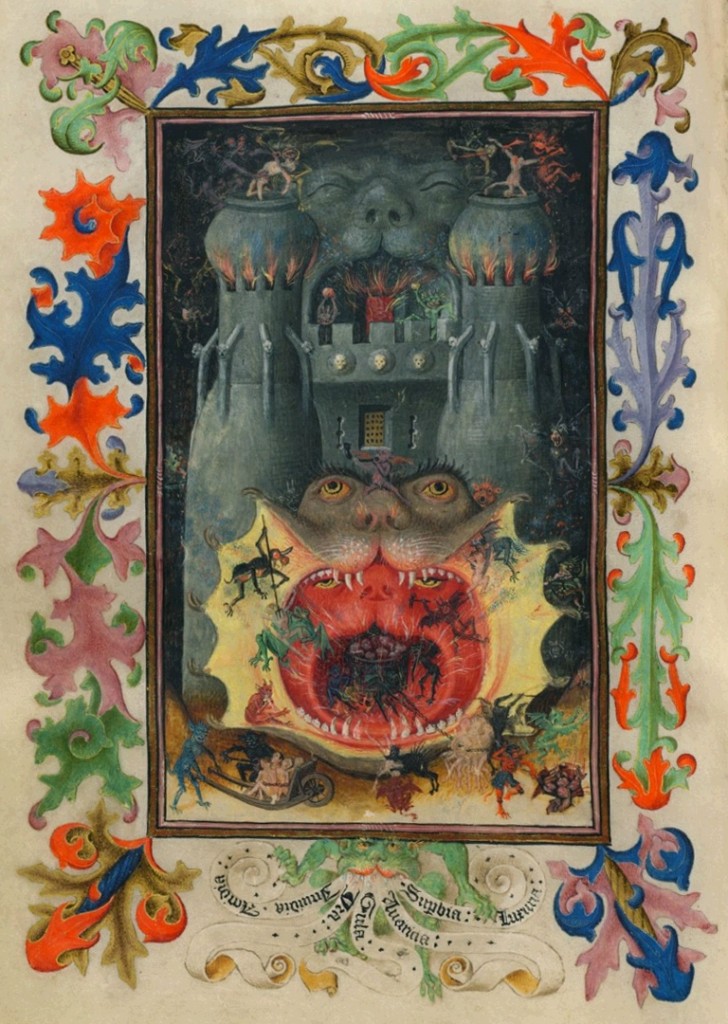Tom O’Donnell
In order to conjure up the sexual practices of our forebears we have to bridge gaps. Gaps in language, time and ways of thinking. In order to write a history of medieval sexuality we need to know what that sexuality consisted of. It is hard enough to mentally recreate the sex lives of our friends from idle gossip when we know the euphemisms, the forms of reference, what is on the sexual menu and what is thought permissible. But for medieval sex lives we have to work creatively with our sources to understand what people were doing with one another. And there is a constant challenge with the written sources.

Our early medieval texts were mostly written by a monastic community, for a monastic community. In this world there is a more marked interest in ejaculation and the fate of semen. This is because semen not used for procreative purposes is more obviously a sin against the propagation of the human race. This is the view of Thomas Aquinas: that the natural point of semen is to beget children so spilling it anywhere but the vagina is contra natura or unnatural.
Is the medieval female sexual experience, then, inaccessible to the historian? If ejaculation is all that theologians and moralists were concerned with, are all other sex acts covered in a veil of silence?
References to other sexual practices are scarce and scattered. But one interesting example comes from a work written between the late eighth and early ninth century. A penitential, written in Old Irish and ‘imaginatively’ called The Old Irish Penitential, provides a list of the penances due for committing a whole host of moral transgressions. The text is divided into sections on six of the eight chief vices (gluttony was in the manuscript but has subsequently been lost, and pride never made the cut). The section on the sins of lust includes two very interesting entries:
Nech dogni etrath o belaib iiii anni in cet-fecht ma gnathach acnapthe vii annis.
Nech touisim a sil hi gin a banscal penneth dib línaib v annos ma gnathach vii annos.
In English these are:
Anyone who performs the fornication of the lips penance for four years if it is their first time but if it is usually their custom seven.
Anyone who spills his seed in the mouth of a woman must pay full penance for five years, if it is a usual thing, seven.
The latter directly refers to fellatio. Once more we can see the concern for semen that is spilled to no procreative purpose. In the context of this reference to oral sex, itself quite rare in medieval sources, the first entry is likely to refer to cunnilingus. The word for ‘lips’, bel, used in the Irish is that used for the lips of the mouth. But, just as in English, this can be the lips of the vagina as well, for example in the description of the hag in Togail Bruidne Da Derga, or The Destruction of Da Derga’s Hostel.
This is a form of sex just for pleasure. Yet it does not elicit a greater censure. In terms of penance, the offender gets off lighter if it is his first time going down on a woman than if he was given a blowjob. What is most illuminating is the way in which the sexual roles are constructed in both cases. A modern audience would see going down on a woman and receiving a blowjob as inverse examples of one another. In the first case the man is active, performing the deed, in the other he is passively receiving it. However, our medieval author has made the man the active partner in both instances: he is the one who performs the fornication of the lips but he is the one who spills his seed as well. This constant emphasis on the male experience is all we have to try and see the full range of sexual experience.
It is in these short references, laconically phrased and difficult to interpret, that we can see how people in the Middle Ages had sex. This is the great challenge of writing the early medieval chapter of the history of sexuality. Once we know the kind of sex people were having, we might start to answer the more interesting question: how they felt about it.
 Tom O’Donnell is a PhD candidate at University College London. He works on childbirth and child-rearing in medieval Europe, concentrating especially on twelfth- and thirteenth-century Ireland.
Tom O’Donnell is a PhD candidate at University College London. He works on childbirth and child-rearing in medieval Europe, concentrating especially on twelfth- and thirteenth-century Ireland.

NOTCHES: (re)marks on the history of sexuality is licensed under a Creative Commons Attribution-NonCommercial-NoDerivatives 4.0 International License.
Based on a work at www.notchesblog.com.
For permission to publish any NOTCHES post in whole or in part please contact the editors at NotchesBlog@gmail.com





“In terms of penance, the offender gets off lighter if it is his first time going down on a woman than if he was given a blowjob.” Well, um, yeah, usually … 😉
Seriously, though, this is such an interesting intro to this research. I’d love a series of articles following further discoveries and analysis. Thanks for posting!
Thanks for the comment! I’ll try and gets series out of this but part of the problem is that precise sexual practice and contemporary attitudes towards them are so hard to detect in our sources. What is more, our sources are pretty scanty themselves.
It would interesting to just hear your translations and related thoughts on any fragments of source.
Do you know what the word ‘etrath’ translates to…?
Reblogged this on Going Medieval and commented:
Interesting post by Tom O’Donnell on the problems of understanding medieval sex lives and, in particular, sex for pleasure. I always find this interesting, especially because I generally assume that people had sex then the same way they had sex now, and were just as varied in their sexual exploration if the HUGE variety of sexual things you could do penance for are anything to go by. Just because you *shouldn’t* do something doesn’t mean anyone took a great deal of notice – and if you could be forgiven for it, how much of a difference would the censure really make? These are all very interesting questions. Looking forward to hearing more from this Notches contributor!
And, outside the monastic world (then as now) the range of variety and permission to explore likely excelled our imagination.
Really interesting snd thoughtful piece. I’m wondering if the first part could also be read as the woman using her lips to perform felatio. If so, then that might actually be presenting a female perspective. There are a few Anglo-Saxon penitential canons that are suggestive of female desire and pleasure. One (off the top of my head) refers to a woman ingesting a man’s semen in order to be more disirable. Only the woman is prescribed penance which may suggest the idea that the woman harvests the semen surreptitiously. You’ve given me an idea for my own blog: http://angli-saxon-monk.weebly.com/blog
Pingback: A Case of Courting: the Erotics of Chess | Sight+Signs
This left me wanting to know a lot more — how *did* they feel about these acts? Were they linked to social roles? Are they perceptible in what literature there may be? A pleasant writing style, too!
This is really excellent. I get so tired of amateur historians bleating on about how the medieval period was so prudish, with no understanding of who wrote about it and why. You address that problem beautifully. As I read your quotes above it occurred to me that it’s likely that the recommendation for penance and that which was actually practiced was probably, as it is today, very far apart!
I don’t see anything involving cunnilingus in this article….=0
Pingback: Riding for Ireland - Quare
How dd they got to know that partners were doing the act.since sex is performed indoors.